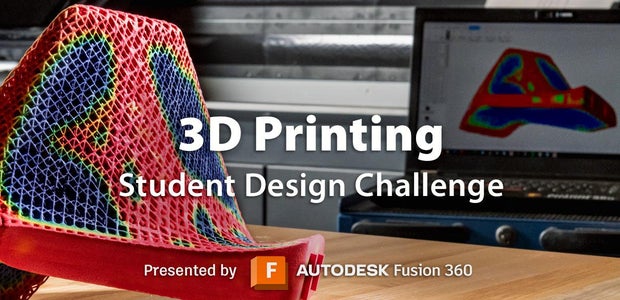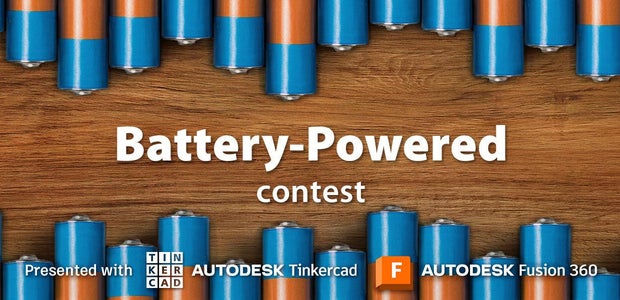Introduction: 3D Printed Futuristic Space Age Wall Clock
This clock is inspired by mid-century/ atomic age design. This particular, futuristic style is very easy to spot. It's characterised by cheerful, bold, opposing colours; curved lines; asymmetry; playful shapes.
The base was designed in Fusion 360 and as such it can be either 3D printed (like I did) or made with wood using CNC or a laser cutter.
This project is not overly complicated and requires only basic knowledge of modelling.
Supplies
- 3D printer
- Filaments in multiple, vivid colours (if you don't want to paint the clock or use vinyl sheets)
- Neutral coloured filament like white, light grey or black (if you want to paint or use vinyl sheets)
- Choose how you want to apply colours to the face of the clock:
- A variety of acrylic paints
- A variety of spray paints
- A variety of self-adhesive vinyl sheets
- Glue- hot glue, plastic glue or epoxy
- Sharp craft knife or scalpel
- Clock mechanism with a long shaft (at least 11mm)
I strongly recommend using self adhesive vinyl sheets for this project. It's easy to use since the entire project is just flat surfaces. Vinyl comes in many shades and you can find truly beautiful, vivid colours. The sheets come in gloss and matt and, if you are lucky, you can find a supplier that offers sample sheets for a very low price. I got 8 different A4 sheets for £8, which costs about the same as one can of spray paint would cost. Low cost, no fumes, no mess. No waiting for anything to dry.
Step 1: Project Sketch and Clock Dimentions
Every project begins with a rough sketch or an idea, so start with that. Create an original piece or find inspiration online, don't use sharp angles, use a lot of curves, bright colours, rounded edges etc.
Before you even attempt to sketch in a modelling software, you need to buy a clock mechanism and measure it exactly or use measurements provided online to fit the mechanism within the design of your clock.
Step 2: FUSION 360 Sketch
Start by creating a sketch using 'Fit Point Spline'.
Play with it, move different pieces around, adjust sizes and shapes.
Once you are done and ready to proceed, you have to extrude each of your shapes individually.
To do that, click on a shape and select 'Extrude E' to create a solid (4-5mm thick).
Repeat that step for all your shapes and then extract each shape to your computer.
Step 3: Find Your Positions and Colours
Transfer all shapes to Tinkercad and arrange them to your liking. Play with different colours, positions and sizes. You might have to go back to Fusion 360 and tweak a shape or two if it's not to your liking.
Find a perfect position for your clock mechanism and use Tinkercad of Fusion 360 to cut a large enough hole to fit it in.
Once the shape of your clock is set you can move to the next step.
Step 4: Cut Out Holes and Add Studs
You will need to add holes and studs to each overlapping piece. They will ensure the shape of the clock remains faithful to the digital design. It will also make it easier to assemble the parts once printed, you will simply add glue to the holes and slide the studs in. Studs will also elevate the pieces and create a more three-dimensional clock.
Step 5: Tinkercad and PDF Files
https://www.tinkercad.com/things/74cGsifnIa3-atomic-clock-12mm-shaft/edit
ATOMIC CLOCK 12MM SHAFT
Attachments
Step 6: 3D Print All Pieces
All pieces should be printed face down, so the first layer will be the face of the clock. In theory it will make things easier and create a smooth surface...provided your bed is levelled correctly.
I've been having some slight issues with my bed. Some of my prints ended up with scars and pits and I had to fill them in with a filler. Not a huge inconvenience if you plan on painting or vinyl wrapping, but if you are using coloured filament and don't plan on painting, you have to make sure your bed is adjusted properly.
One more thing to note:
If you plan on spray painting the pieces or using self-adhesive vinyl sheets, your best bet would be to use neutral coloured filament like white, light grey or black. Neutral colours will provide better background for paint of vinyl.
****I used red filament because that's all I had left since there have been some issues with deliveries in my area. That caused a little bit of a problem when I used lightly coloured vinyl like teal and yellow. Red would peek through and change the vinyl's original colour. I had to resort to spray-painting a few parts white before applying vinyl sheets in order to preserve the vivid colour.
Step 7: Too Big to Print
Some parts of the clock were too big to 3D print as a whole piece and I didn't want to scale them down, so I had to print it in 2 parts and use brackets to connect them.
https://www.tinkercad.com/things/fWpjwrh7raj-viewing-only/edit
VIEWING ONLY
Step 8: Vinyl Sheets
Peel your chosen vinyl sheet and place it glue side up on a flat surface.
Place your clock piece on top, press it down and carefully pick it up in your hand.
Use a soft rug or your fingers to smooth the surface of the vinyl to remove any air bubbles.
Use a very sharp craft knife or scalpel to carefully and slowly trim away excess vinyl. Use plenty of light and don't cut yourself.
Step 9: Holes
Once all pieces are covered in vinyl remember to also cut out the holes.
Step 10: Assemble With Glue
Use any glue you feel comfortable with to assemble the pieces. I used hot glue, it's quick, fast-setting and very strong. Epoxy or plastic glue would also work fine.
Whichever glue you choose, use some paper sheets to protect the areas you work with from accidental glue spillage.
Step 11: Assembly
Step 12: Clock Mechanism
Fit the clock mechanism into the hole at the back and follow the manual to assemble all the parts. Tighten the top nut with pliers.
Step 13: Trim Clock Hands
Loosely fit the clock hands onto the clock shaft and check if they have enough space to move freely. I wanted mine to be short, so I trimmed them all quite a lot.
Step 14: Add Batteries, Hang on the Wall and Enjoy

Runner Up in the
Clocks Contest















16 Comments
5 weeks ago
Very nice design, nicely built! Thanks for sharing.
Worth noting that the placement of the holes on the parts that are split do not match the rest. I noticed this myself when printing. Or maybe I assembled it wrong (?)
Reply 5 weeks ago
No, the split parts don't match the rest, they were not meant to be printed at all. I just provided them to show how to split the large parts, so you could do it yourself. After all, I don't know how big is the clock you are making or how big your printers bed is 🤦🏼♀️🤦🏼♀️🤦🏼♀️ I should have been more clear about this bit. I'm sorry.
Reply 5 weeks ago
ah I see, I got it to work well anyway with a little fix and glue. I don't think the instructions were unclear. I should have double checked before printing. 😄
2 months ago
Congratulations on being a finalist in the Clocks Contest!
Thanks for building a clock without a round background ;-)
2 months ago
Really nice... Do you have have it in a pdf format so I can cut it out on my scroll saw?
Reply 2 months ago
Yes, added a PDF file in Step 5.
Reply 2 months ago
Thank you
2 months ago
I love your clock, but I can't make it since I am not a 3d printer person. I am a woodworker, though... is there any way you would make your patterns available so I could make my own?
Thank you for your time, and for posting this for all of us to see.
Reply 2 months ago
I added a PDF document in Step5. Is that what you had in mind? I'm not a woodworker, so I have no idea what type of format is acceptable.
2 months ago on Introduction
Love,Love,Love.
2 months ago on Step 1
This is super cute! I love the colors that you used.
2 months ago
This is a very cheerful creation. It brightened my day. And it is even more space age than mine.
https://www.instructables.com/Space-Age-Clock/
2 months ago
Love the way you elevated the pieces for that floating in space 3-D effect!
2 months ago
Is the time of the clock 10:40 approx., b/c the fourth slightly off-set, top, orange circle makes it a tad ambiguous?
2 months ago
Really like this clock type from the atomic age. I' d like to make one in a digital way. Any ideas?
2 months ago
I love this clock so much! It makes me so happy to look at it :D